The Chinese team won the 2017 World Team Chess Championship held June 17-26 in Khanty Mansiysk, Russia in a resounding performance. They scored a record 16 points (7 wins and draws with the US and Turkey) and did not lose a single individual game. Fourth board Li Chao (2720) led the way scoring 7 from 9 for a 2809 performance.
Chao’s victory over Vladimir Fedoseev of Russia in round seven, that led to a 2 ½ - 1 ½ China victory, decided the tournament as up to that point the host country had been leading the event. The match between the top two seeds was quite dramatic as for much of it Russia was pressing on boards one, two and three with small advantages. At one point the Russian team captain, billionaire Andrei Filatov, tried to do some horse-trading, offering a 2-2 result mid-way through the match, but his Chinese counterpart declined having faith in his players to hold their positions.
The Russian team also performed exceptionally well in Khanty finishing with 15 points, a score that would have tied or won any World Team since the switch to match point scoring in 2010. Despite the absence of Vladimir Kramnik and Sergey Karjakin (conflicts with Norway Chess and Paris), it was clear going into the event that the Russian team was taking the
tournament very seriously. Just before the
competition began, they decided to go with hot hands, substituting Fedoseev and Maxim Matlakov, who had tied for first in the recently concluded European Individual Championship, for Dmitry Jakovenko and Ernesto Inarkiev. When you have such a deep bench as Russia, with 14 players over 2700 FIDE, such strategies are permitted.
The Russian team under Filatov has been attempting to remove the curse that has led to their winning no Olympiad team gold medals since 2002. While they have been consistently high performers in World Team events (gold in 2005, 2010 and 2013), they were so serious in Khanty Mansiysk that both their teams stayed in a separate hotel with air conditioning (a nice luxury in 90 degree heat) located 200 yards from the playing site. The rest of the teams were at the “Olympic” hotel out near the highway which necessitated 20 minute bus ride each day to the playing hall. The Chinese team were perfect hosts when they held the event in 2011. To their credit, this year's uneven playing field didn’t faze them in the least.
Poland, led by a one-two punch of 2700s Radoslaw Wojtaszek and Jan-Krzysztof Duda won bronze with 12 points – possibly the first team medal for Poland since its glory days of the 1930s when Rubinstein, Tartakower and Najdorf played. The Poles, who were doing well throughout the event, entered the last round only a point back of Russia and two behind China, but lost a tough match to the latter 1 ½ - 2 ½ with Li Chao again taking care of business.
India, without Viswanathan Anand (who rarely plays team events) and Pentala Harikrishna, started slowly but finished strong to finish fourth, as they did in the 2016 Olympiad. Add to this their third place finish at the Tromso Olympiad in 2014 and there is no question they are one of the elite teams in the world.
Turkey, playing without its top-rated player Alexander Ipatov, was the surprise of the event, finishing fifth with ten points and would have been even higher if they had not run out of steam at the end losing to the United States and Belarus.
Of the teams finishing sixth through eighth only Belarus can be reasonably pleased with their finish. For Ukraine, the pre-tournament pick for third, and the U.S., the result was miserable. More on the latter in a moment.
Norway sent a young team, captained by expatriate American Grandmaster Jonathan Tisdall who has made his home in Oslo for over three decades. Its three top boards, all in their teens and early twenties, performed above expectation, and if they had gotten just a little help from their board 4 and reserve player (collectively 1 out of 13) they would have finished in the middle of the pack.
Last but not least were the Egyptians. The perennial underdogs in this event and without their 2600 players Bassem Amin (currently 2672) and Ahmed Adly, they barely averaged over 2400 FIDE as a team, but don’t let ratings deceive you. The team was full of fight and seriously undervalued. Though they didn’t win or draw a match they picked up plenty of rating points and 42-year-old reserve player Farahat Ali, made a Grandmaster norm (in World Team events there is an exception that 7 game norms are allowed). There is no question that limited opportunities hold back the Egyptian players. Over in the Women’s section its second board Wafa Shrook, rated 2141, beat a 2535, drew a 2426 and beat a 2449 in rounds 5-7!
What happened to the U.S. team? Jet-lag was an issue as mentioned in my mid-event report on the 2017 World Team, and unfortunately it continued to affect the
American contingent throughout the
tournament, and plagued not only us. The Indian reserve board Parimarjan Negi, who is a student at Stanford and traveled from San Francisco to Russia, was spotted fast asleep at the closing ceremony.
The other nine teams that played were no more than a maximum time difference of four hours from Khanty Mansiysk, while the US players had to cross at least ten zones and in some cases twelve. Of course we knew this going into the event and planned accordingly.
Two years before the World Team was in Armenia which is eleven hours ahead of the U.S. West Coast, and we did great, finishing equal fourth after being seeded eighth. We flew into Yerevan four days before and it was just enough to adjust although one more day to acclimate would have been helpful.
The initial travel plans for the 2017 World Team were similar but quickly unraveled. Shortly after buying our tickets the organizers moved the first round up a day. That plus the weird flight schedule (the only flight left for Khanty at 2:00 am) meant that we had two days to adjust. It didn’t work. In retrospect we should have flown to Europe a week before, spent five days there, then flown to the tournament two days before. This does mean additional money spent on accommodations (the US Chess expense money covered only two days) and another week of lost income. The latter was the reason several top-rated candidates for the Womens team passed up the event and at least one prospect for the U.S. coach declined going to Khanty – they could make more teaching at several chess camps than spending over two weeks in Siberia. Enough with the excuses, now on to the last four rounds.
With four match points after five rounds and finishing with Ukraine and Russia, we knew we better win rounds six and seven against Egypt and Turkey. We did, but not as convincingly as the 3-1 scores suggest. Varuzhan had a lucky escape when he overlooked White’s thematic 26.f5, a move he would normally see in a blitz game. The move caught him totally off-guard, and was further evidence that he didn't find his form in this event.
[pgn]
[Event "World Team Chess Championship"]
[Site "Khanty-Mansiysk, RUS."]
[Date "2017.06.23"]
[White "Fawzy Adham (EGY)"]
[Black "Akobian Varuzhan (USA)"]
[Result "1/2-1/2"]
[ECO "C07"]
[WhiteElo "2418"]
[BlackElo "2673"]
[PlyCount "131"]
[EventDate "2017.??.??"]
[Source "ChessBase"]
[SourceDate "2007.09.04"]
[WhiteClock "0:02:08"]
[BlackClock "0:01:28"]
1. e4 e6 2. d4 d5 3. Nd2 c5 4. Ngf3 cxd4 5. Nxd4 Nc6 6. Bb5 Bd7 7. Nxc6 bxc6 8.
Bd3 Bd6 9. Qe2 Qc7 10. Nf3 Ne7 11. e5 Bc5 12. c3 a5 13. O-O h6 14. Bf4 Qa7 15.
a4 Rb8 16. Rab1 Rb7 17. Qd2 Ng6 18. Bxg6 fxg6 19. b4 Be7 20. Qd3 Kf7 21. Be3
Qa8 22. b5 cxb5 23. axb5 Rc8 24. Nd4 a4 25. f4 Qa5 $4 ({After the natural}
25... a3 {chances are equal.}) 26. f5 $1 {White should be winning now.} gxf5
27. Nxf5 exf5 (27... Rxc3 28. Nd6+ Kg8 29. Nxb7 Rxd3 30. Nxa5 Rxe3 31. Rfc1 {
and the b-pawn cannot be stopped.}) 28. Qxd5+ Ke8 29. Qxb7 Qxc3 30. Qf3 (30.
Bf2 {is easier:} a3 (30... Be6 31. Qa7) 31. Qd5) 30... a3 31. b6 a2 32. Ra1 (
32. Rbd1 Be6 33. b7 Rb8 34. Rc1 Qd3 35. Rc7 Qa6 36. Bd4 {wins.}) 32... Be6 33.
Rfc1 (33. b7 Rb8 34. Rac1 Qa5 35. Qh5+ Kf8 36. Rc8+ $1 Rxc8 37. Qxf5+ $1 Bxf5
38. bxc8=Q+ {is a pretty winning line.}) 33... Qb3 34. Rxc8+ Bxc8 35. Bd4 Qb1+
36. Qf1 $2 ({The wrong way to block the check.} 36. Qd1 $1 {wins immediately
while after the text the pawn on a2 should save Black.}) 36... Qb4 37. Bf2 Be6
38. Qc1 Kf7 $2 (38... Qe4 $1) 39. Qc2 Bd8 40. Qc5 ({One last blunder in mutual
time pressure on the last move before the time control.} 40. Rxa2 $1 {wins.
Now the game is eventually drawn.}) 40... Qb1+ 41. Qc1 Qb5 42. Qe3 Be7 43. h3
Kg6 44. Qc3 Kh7 45. Bd4 Bd8 46. Qc5 Qb1+ 47. Kh2 Bg5 48. Qc6 Bf4+ 49. g3 Be3
50. Rxb1 axb1=Q 51. Bxe3 Qa2+ 52. Qg2 Qxg2+ 53. Kxg2 g5 54. Kf2 Bd5 55. h4 Kg6
56. Ke2 Be4 57. Bc1 Bd5 58. Kd3 f4 59. Bxf4 gxf4 60. gxf4 Kf5 61. Kd4 Bb7 62.
Ke3 h5 63. Kd4 Ke6 64. Kc5 Ba8 65. Kc4 Bb7 66. Kd4 1/2-1/2[/pgn]
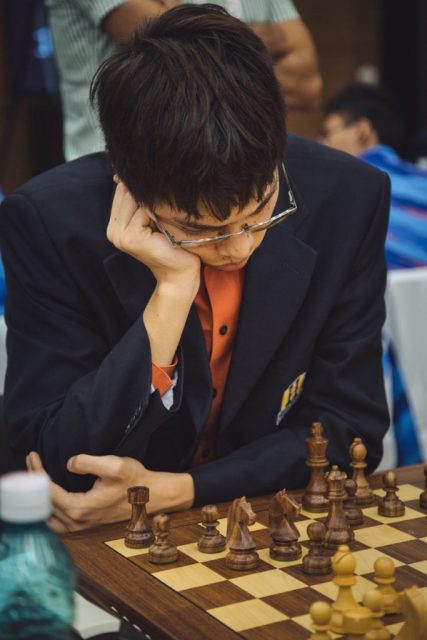 GM Ray Robson
GM Ray Robson
One bright spot for us was Webster University student Ray Robson’s snap-crackle-pop miniature over an experienced Egyptian International Master.
[pgn]
[Event "World Team Chess Championship"]
[Site "Khanty-Mansiysk, RUS."]
[Date "2017.06.23"]
[Round "6.19"]
[White "Robson Ray (USA)"]
[Black "Abdelnabbi Imed (EGY)"]
[Result "1-0"]
[ECO "B67"]
[WhiteElo "2656"]
[BlackElo "2428"]
[PlyCount "49"]
[EventDate "2017.??.??"]
[Source "ChessBase"]
[SourceDate "2007.09.04"]
[WhiteClock "0:55:13"]
[BlackClock "0:47:01"]
1. e4 c5 2. Nf3 d6 3. d4 cxd4 4. Nxd4 Nf6 5. Nc3 Nc6 6. Bg5 e6 7. Qd2 a6 8.
O-O-O Bd7 9. f3 Qc7 10. h4 Ne5 11. Bd3 h6 12. Be3 h5 13. Rhe1 b5 14. Kb1 Be7
15. Bg5 Nc4 $2 {The knight is needed on e5.} 16. Bxc4 Qxc4 $4 (
16... bxc4 {had to be played. Now Ray finishes the game with a series of
hammer blows.}) 17. Nf5 $1 exf5 18. exf5 Bxf5 19. Rxe7+ $1 Kxe7 20. Qxd6+ Ke8
21. Bxf6 gxf6 22. Re1+ Be6 23. Nd5 Qxd5 24. Qxd5 Rd8 25. Rxe6+ 1-0
[/pgn]
The victory over Turkey in round seven moved us up to 5
th place with chances to finish on the podium if we finished strongly. Once again Ray Robson was the star for the team winning a beautiful attacking game.
[pgn] [Event "World Team Chess Championship"]
[Site "Khanty-Mansiysk, RUS."]
[Date "2017.06.24"]
[White "Can Emre (TUR)"]
[Black "Robson Ray (USA)"]
[Result "0-1"]
[ECO "E10"]
[WhiteElo "2589"]
[BlackElo "2656"]
[PlyCount "78"]
[EventDate "2017.??.??"]
[Source "ChessBase"]
[SourceDate "2007.09.04"]
[WhiteClock "0:07:31"]
[BlackClock "0:01:28"]
1. d4 Nf6 2. c4 e6 3. Nf3 d5 4. g3 Bb4+ {This was a popular defense against
the Catalan with Black scoring well (4 out of 6).} 5. Bd2 Be7 {The manuever ...
Be7-b4+-e7 might look like a waste of time, but the bishop on d2 is not
ideally placed and normally has to move again.} 6. Bg2 O-O 7. O-O Nbd7 8. Qc2
Ne4 9. Bf4 c6 10. Nbd2 (10. Nc3 g5 {was Petrosian-Botvinnik from game 9 of
their 1963 World Championship match and more recently Eljanov-Carlsen, Wijk
aan Zee 2016.}) 10... g5 11. Be3 Nd6 (11... f5 {was a reasonable alternative
transposing into a Dutch Stonewall, but the text is also strong and more
flexible as the knight may come to f5.}) 12. cxd5 cxd5 {A question of taste as}
(12... exd5 {was also good.}) 13. Nb3 b6 14. Ne5 Ba6 15. Nc6 Rc8 16. Nxe7+ Qxe7
{White has the two bishops but Black has good squares for all of his pieces.}
17. Qd1 f5 18. Bd2 Nc4 19. Bc3 f4 20. Nc1 {White prepares to recycle his
knight to d3 where it strengthens his kingside and controls the important e5
square.} Rf6 {Ray begins kingside operations before White gets in Nd3 and Bb4.
A quieter alternative was} (20... Nb8 21. Nd3 Nc6 {with equal chances.}) 21.
Nd3 fxg3 22. hxg3 Rh6 23. e3 $6 (23. Qa4 {or}) (23. Rc1 {were better than the
text which weakens White.}) 23... Nf6 24. Bb4 Qe8 25. b3 $4 (25. Rc1) 25... Nd2
$1 ({Spectacular but even stronger was} 25... Nb2 $3 26. Nxb2 g4 {and the
Queen comes to h5 with devasting effect as in the game, but without a White
knight coming to f4.}) 26. Qxd2 Qh5 27. f3 g4 28. Nf4 $2 {This looks natural
but loses on the spot. White had to play} (28. Rf2 Qh2+ 29. Kf1 Qxg3 30. Rd1 {
protecting the knight on d3 to free up White's queen for defense.} Rh2 31. Qe2
{and the threat ..h4-h3 is very difficult to meet.}) 28... Qh2+ 29. Kf2 gxf3
30. Kxf3 Ne4 31. Qe1 Bxf1 32. Bxf1 Kf7 {Black prepares ...Rg8 but had an
immediate win with} (32... Rc2 33. Be2 Rxe2 $1 34. Nxe2 Rf6+ 35. Nf4 h5 $1 {
and there is no defense against 36...Ng5 mate!}) 33. Bg2 Rc2 $1 {Ray, who was
low on time, doesn't miss his second chance.} 34. Rc1 Rxg2 (34... Ng5+ 35. Kg4
Rxg2 {was even faster but there are several roads to victory here.}) 35. Nxg2
Rf6+ 36. Nf4 h5 {Again the threat of ...Ng5 mate is unstoppable.} 37. Rc7+ Kg8
38. Rc8+ Kh7 39. Qb1 (39. Rc7+ Kh6 {The text prevents ...Ng5, but allows
another checkmate.}) 39... Qf2# 0-1[/pgn]
Round eight ended any hopes for a decent finish. Rejecting the Ukrainians offer for 2-2 (they had been suffering even more than us with their two 2700s both minus 2 at this point in the event), we had a hard fought match that was decided when Varuzhan lost on time on move 40 in a drawn rook ending, just after making his move and punching his clock. Var was never in trouble, and in fact slightly better for part of the game, but was focusing a lot on Alex Onischuk’s game who needed a miracle save to split the point.
[pgn]
[Event "World Team Chess Championship"]
[Site "Khanty-Mansiysk, RUS."]
[Date "2017.06.25"]
[White "Akobian Varuzhan (USA)"]
[Black "Moiseenko Alexander (UKR)"]
[Result "0-1"]
[ECO "E32"]
[WhiteElo "2673"]
[BlackElo "2677"]
[PlyCount "109"]
[EventDate "2017.??.??"]
[Source "ChessBase"]
[SourceDate "2007.09.04"]
[BlackClock "0:04:43"]
1. d4 Nf6 2. c4 e6 3. Nc3 Bb4 4. Qc2 O-O 5. a3 Bxc3+ 6. Qxc3 b6 7. Bg5 Bb7 8.
e3 d6 9. Ne2 Nbd7 10. Qc2 Re8 11. Nc3 Nf8 12. f3 h6 13. Bh4 Ng6 14. Bf2 c5 15.
Rd1 Qe7 16. Be2 cxd4 17. Rxd4 d5 18. cxd5 Nxd5 19. Nxd5 Bxd5 20. O-O Rec8 21.
Qa4 Ne5 22. e4 Bc6 23. Qb4 $6 (23. Qb3 {and White's two bishops give him a
slight pull.}) 23... Qxb4 24. Rxb4 Be8 25. Bg3 Nc6 26. Rc4 Na5 27. Rxc8 Rxc8
28. Rd1 (28. b4 Nc4 29. Rc1 b5 30. Bf2 a6 31. Bc5 Nxa3 32. Ra1 Nc4 33. Rxa6 {
is still a little better for White.}) 28... Ba4 29. Rd4 Bb3 30. h4 Bc4 31. Bd1
Bb3 32. Bxb3 Nxb3 33. Rd7 Rc1+ 34. Kh2 Rc2 35. Rxa7 Rxb2 36. Ra8+ Kh7 37. Rf8
f6 38. Bf4 Nd4 39. Kh3 e5 40. Bc1 Ra2 41. Be3 Rxa3 42. Bxd4 exd4 43. Rb8 Rb3
44. Rd8 d3 45. h5 Rc3 46. Kg4 b5 47. Kf4 b4 48. Ke3 b3 49. Rb8 d2+ 50. Kxd2
Rc2+ 51. Ke3 Rxg2 52. f4 Rg3+ 53. Kd4 Rf3 54. f5 Rh3 55. Rb7 {After 55...Rxh5
56.Rxb3 the rook ending is drawn, but White lost on time here.} 0-1[/pgn]
The team still hoped to finish strong but was defeated 4-0 in the final round by the Russian team. Three of the games in the match went over five hours, and were among the l
ast
to finish in the 2017 World Team Championship.
[pgn]
[Event "World Team Chess Championship"]
[Site "Khanty-Mansiysk, RUS."]
[Date "2017.06.26"]
[White "Xiong Jeffery (USA)"]
[Black "Fedoseev Vladimir (RUS)"]
[Result "0-1"]
[ECO "D30"]
[WhiteElo "2658"]
[BlackElo "2690"]
[PlyCount "86"]
[EventDate "2017.??.??"]
[Source "ChessBase"]
[SourceDate "2007.09.04"]
1. d4 d5 2. c4 e6 3. Nf3 Nf6 4. g3 Bb4+ 5. Bd2
(5. Nbd2 {allows} dxc4 6. Bg2 b5 {and the time White has to spend recovering
the pawn allows Black to play ...c5 and equalize. One example is} 7. a4 c6 8.
O-O a5 9. Qc2 O-O 10. b3 c3 11. Nb1 bxa4 12. bxa4 Bb7 13. Nxc3 c5 $11 {Yu
Yangyi-Yilmaz from round 5 in Khanty.}) 5... Be7 6. Bg2 O-O 7. O-O c6 8. Qc2 a5
9. Rd1 b5 {Black wants to close the queenside before adopting a
Stonewall-setup. This exact sequence of moves does not appear to have been
played before and illustrates the importance of interpolating ...Bb4+ before
playing ...Be7. If White's bishop were on c1 he would be playing c4-c5
followed by Nbd2 and a quick e4. Fedoseev, who is one of Russia's great
young hopes, goes his own way in the opening, going so far as to employ a novelty on
move two against IM Hauge of Norway (1.e4 c6 2.Ne2 Qa5!?).} 10. c5 {The
correct approach as after} (10. cxb5 cxb5 {Black's bishop will come to a6 and
become active after ...b5-b4. Also White's queen will be exposed on the c-file.
}) 10... Nbd7 11. Bf4 Nh5 12. Bc1 f5 ({On} 12... Nhf6 {plays} 13. Nbd2 {
with e4 to follow.}) 13. Ne5 Nxe5 14. dxe5 g5 15. Nd2 Qc7 16. Nf3 g4 17. Nd4
Bd7 18. Bf4 Nxf4 19. gxf4 b4 20. a4 bxa3 21. Rxa3 Rfb8 22. h3 Qa7 23. Rc3 gxh3
24. Bxd5 $5 (24. Bxh3 {is of course possible, but that is not what Jeffery had
in mind when he played 22.h3.}) 24... cxd5 (24... exd5 25. e6 Kh8 26. exd7 Qxd7
27. Rxh3 {with equal chances was another possibility.}) 25. c6 Kh8 ({Black has
to return the piece.} 25... Bc8 $2 26. c7 {cuts off Black's forces from the
defense of his king. For example} Rb6 27. Rg3+ Kf7 (27... Kh8 28. Qa4 $1 {
winning}) 28. Rxh3 Kg8 {and again} 29. Qa4 Ba6 {and now} 30. Qd7 {and the game
is over.}) 26. cxd7 Rg8+ 27. Kh1 Qxd7 28. Rc7 Qe8 29. Qc3 ({White keeps the
tension avoiding the simplifying} 29. Nxe6 Qh5 30. Qd3 (30. Rxe7 $4 Qg4) 30...
Qg6 31. Ng5 Bxg5 32. fxg5 Qxg5 33. Qxh3 Rg7 {with a likely draw after} 34. Rxg7
Qxg7 35. Rxd5 Rg8 36. Rd1 Qxe5) 29... Rg6 30. Rc1 {This looks promising but
Fedoseev finds a strong defense. No better is} (30. Rg1 Bd8 31. Rb7 Rxg1+ 32.
Kxg1 Qg8+ 33. Qg3 Bh4 34. Qxg8+ Rxg8+ 35. Kh2 Rg6 {and Black has no problems.})
30... Bh4 $1 31. Nf3 Bd8 32. Rb7 Qg8 {Black is finding all the right moves.
With the text he prepares ...Rg2.} (32... Rg2 $2 33. Ng5 $1 Bxg5 34. Qxh3) 33.
Nd4 $2 ({Jeffery was low on time at this point and it was not easy to see that
} 33. Nh2 {to capture the h3 pawn was essential.}) 33... Bh4 (33... Rg4 $1 34.
Nxf5 h2 35. Ng3 Rxf4) 34. Qf3 $2 (34. Nf3 $1 {kept the balance.}) 34... Rc8 35.
Rc6 Rg1+ 36. Kh2 Rg2+ 37. Kh1 Rxc6 38. Nxc6 Qg4 {Now Black is winning.} 39. Nd4
Rxf2 40. Rb8+ Kg7 41. Nxe6+ Kh6 42. Qxg4 fxg4 43. Rb6 Bg3 0-1[/pgn]
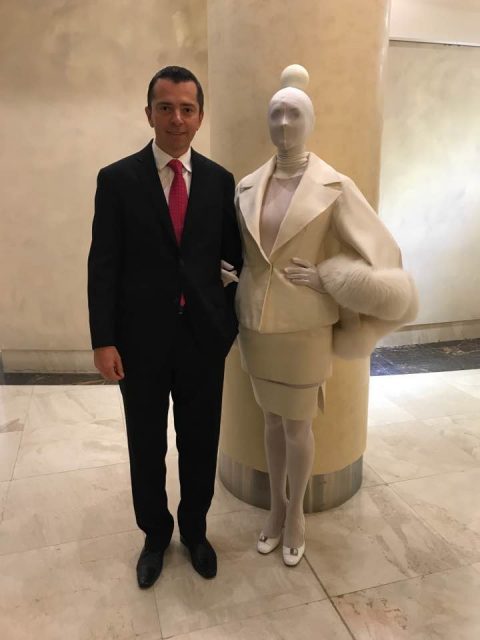
GM Alex Onischuk
[pgn]
[Event "World Team Chess Championship"]
[Site "Khanty-Mansiysk, RUS."]
[Date "2017.06.26"]
[White "Onischuk Alexander (USA)"]
[Black "Vitiugov Nikita (RUS)"]
[Result "0-1"]
[ECO "E11"]
[WhiteElo "2685"]
[BlackElo "2720"]
[PlyCount "114"]
[EventDate "2017.??.??"]
[Source "ChessBase"]
[SourceDate "2007.09.04"]
[WhiteClock "0:01:02"]
[BlackClock "0:01:06"]
1. d4 Nf6 2. c4 e6 3. Nf3 Bb4+ 4. Bd2 Bxd2+ 5. Qxd2 d5 6. Nc3 O-O 7. e3 Qe7 {
This line of the Bogo-Indian has a reputation as a tough line to beat. What
Black lacks in dynamic play is made up by his rock solid position. On} 8. cxd5
(8. Rc1 {the second player continues} Rd8 9. Bd3 dxc4 10. Bxc4 c5 {and it very
difficult for White to show any advantage. Alex opts instead for a Queen's
Gambit Declined Exchange Variation type position, but without the dark-squared
bishops.}) 8... exd5 9. Bd3 b6 10. O-O Bb7 11. Ne5 c5 12. Rac1 c4 13. Bb1 a6 $6
{This might not be the most exact, the immediate} (13... Nc6 {looks more
accurate.}) 14. a4 (14. e4 $1 {when} dxe4 $2 15. Nxc4 Nbd7 16. Qf4 {allows
White to develop a nice initiative.}) 14... Nc6 15. f4 Nb4 16. Rce1 Rac8 17.
Qe2 Rc7 18. g4 {White goes all in but Black has adequate defensive resources.}
Ne4 19. g5 (19. Bxe4 dxe4 20. Nxc4 b5 {followed by ...Nd3.}) 19... f6 $1 20.
gxf6 gxf6 21. Nf3 Kh8 22. Kh1 Qg7 23. Rg1 Qh6 24. Rg2 Qh5 25. Rf1 $6 ({Here
capturing on e4 right away kept the balance.} 25. Bxe4 dxe4 26. Nd2) 25... Bc8
$1 26. Bxe4 dxe4 27. Nd2 $2 (27. Ng1 Qxe2 28. Rxe2 {was better for Black, but
not as much as in the game.}) 27... Qxe2 28. Rxe2 Bg4 $1 {This forces White to
sacrifice the exchange.} 29. Rg2 Bh3 30. Ndxe4 Re7 31. Rf3 Bxg2+ 32. Kxg2 Nd3
33. Nd6 {Sacrificing a second exchange is the best practical chance. Alex
successfully defended many unpleasant endgames in this tournament so we still
had hopes he might still draw this game.} Ne1+ 34. Kf2 Nxf3 35. Kxf3 f5 $1 ({
The correct decision as} 35... Rc7 {allows} 36. e4 {with e5 to follow.}) 36.
Nxc4 Re6 37. d5 Rh6 38. d6 {White pins his hopes on his d-pawn.} Rxh2 {Now
Black's passed h-pawn is a potential game winner.} 39. e4 b5 (39... fxe4+ {
Black understandibly did not want to activate White's king, but} 40. Kxe4 h5
41. d7 h4 {was the correct path.}) 40. axb5 axb5 41. Nxb5 fxe4+ 42. Kxe4 Rh4
43. Ne5 Rhxf4+ 44. Kd5 {White seems to be on the verge of a draw but Vitugov
plays the final phase of the game in masterly fashion.} Kg8 45. d7 Rf1 46. Nd4
(46. Nd6 h5 47. b4 h4 48. b5 h3 49. b6 h2 {and White is too slow.}) 46... Rd1
47. Nec6 h5 48. d8=Q Rxd8+ 49. Nxd8 h4 50. N8c6 h3 51. Ne7+ Kf7 52. Nef5 Kg6 $3
{Bravo!} (52... Kf6 53. Ne3 {draws as does}) (52... h2 53. Ng3 {Black's king
needs to be able to reach f4 or g4.}) 53. Ng3 (53. Ke4 Rxd4+ $1) 53... Kg5 54.
Ke4 Kg4 55. Nde2 Re1 56. Ke3 {Can you find the winning move?} Rxe2+ $1 57. Nxe2
h2 0-1[/pgn]
US Team Individual Results
- Sam Shankland 3.5/8 2607 (performance rating)
- Alex Onischuk 3.5/7 2653
- Varuzhan Akobian 2.5/6 2534
- Ray Robson 4/8 2626
- Jeffery Xiong 2.5/7 2484
Note: Ray had Black in 6 out of his 8 games.
Alex has now tied the all-time record for most times representing the United States in Olympiads/World Team Championships held by Larry Christiansen and Yasser Seirawan (twelve each). Robert Byrne, who played nine Olympiads when they were longer, with preliminaries and final groups, looks to have played the most games of any American with 116.
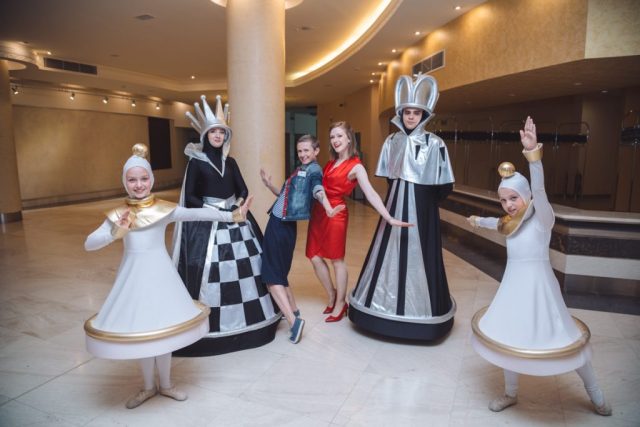 Closing Ceremony, http://ugra2017.fide.com/
Closing Ceremony, http://ugra2017.fide.com/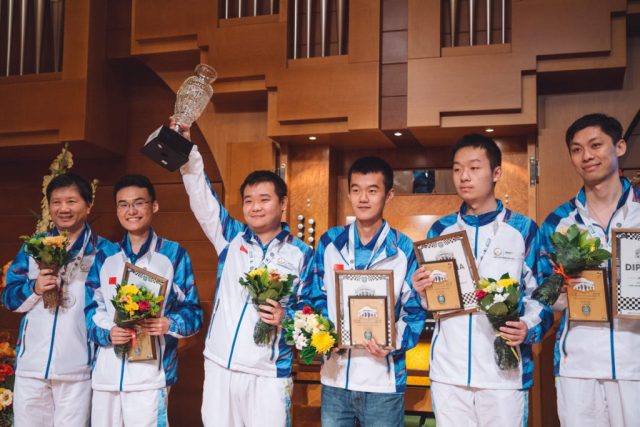 The winning Chinese team, Photo official tournament website
The winning Chinese team, Photo official tournament website IM John Donaldson, http://ugra2017.fide.com/
IM John Donaldson, http://ugra2017.fide.com/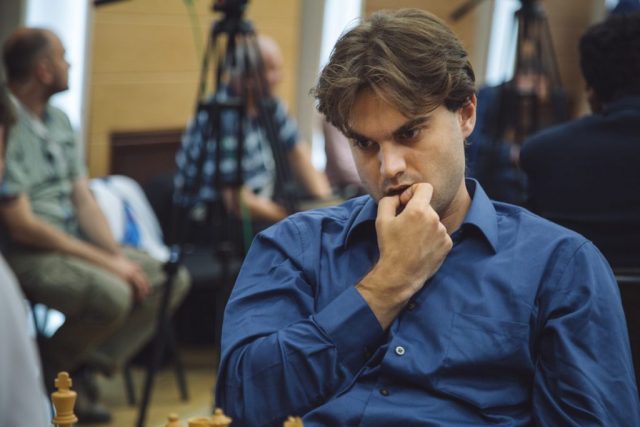 GM Sam Shankland, http://ugra2017.fide.com/
GM Sam Shankland, http://ugra2017.fide.com/








